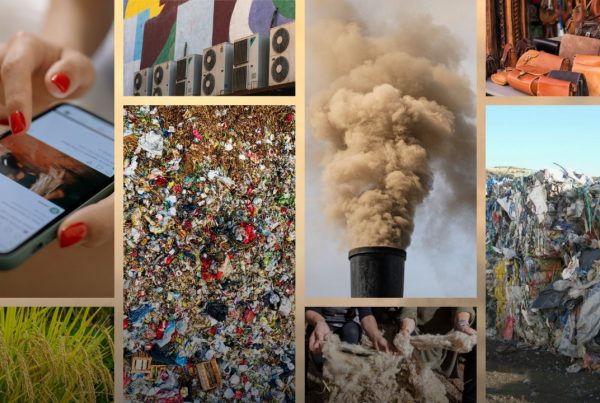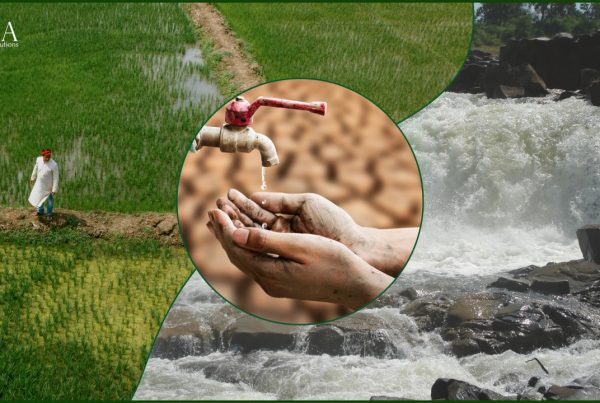Mangroves, often overlooked and undervalued, stand as one of the most powerful nature-based solutions to mitigate climate change. These coastal ecosystems are exceptional in their ability to sequester carbon, protect shorelines, and support biodiversity. Despite their immense potential, these coastal guardians remain largely unexplored and underutilised in global climate strategies.
What are mangroves?
Mangroves are a type of tropical forest uniquely adapted to loose wet soils and salt water, found at the edges of land and sea, periodically submerged by tidal water. Along with the salt or tidal marshes and seagrass beds, mangroves exemplify blue carbon ecosystems with significant potential for carbon absorption and storage. Blue carbon refers to the carbon captured and stored by coastal and marine ecosystems.
Economic and Environmental Benefits
The ability to store carbon in mangrove forest ecosystems is relatively more than that of other tropical forests around the world. These unsung heroes sequester carbon in their above- ground biomass, soil, and roots, contrary to terrestrial forests, which store carbon in their trees for the most parts. Large-scale protection and restoration of mangroves, tidal marshes, and seagrasses which can remove ∼3% of annual global greenhouse gas emissions.
The World Bank’s most recent ’Changing Wealth of Nations’ (2021) report calculated that the Mangrove ecosystems can protect more than 6 million people from flooding annually and prevent losses of $24 billion in productive assets. The carbon sequestration and storage by Mangrove, saltmarsh, and seagrass ecosystems have been valued up to $190 billion per year.
Mangroves under threat
According to the Blue Carbon Initiative, Mangroves are disappearing globally at a rate of 2% per year. Although they cover only 0.7% of the entire land, experts’ calculations reveal that the carbon emissions from Mangrove deforestation can contribute as much as 10% of world emissions from deforestation. (Source – UNESCO)
Currently, the restoration and conservation of mangrove ecosystems are attracting considerable interest from investors, spurring a growing avenue of blue carbon projects globally. However, the avenues of blue carbon projects transpiring on the ground are often constrained by the lack of certainty over the risk-return ratio, implementation pathways, and policy or legislative frameworks.
Carbon Standards for Mangrove Projects
By offering standards and procedures for verification, carbon registries play a crucial role in guaranteeing the integrity of blue carbon projects for mangroves. Methodologies such as the Restoration of Degraded Mangrove Ecosystems (VM0007) and Tidal Wetland and Seagrass Restoration (VM0033), which emphasise flexibility and co-benefits, are included in Verra’s Verified Carbon Standard (Verra, 2024). According to the Gold Standard (2024), initiatives that support blue carbon and the Sustainable Development Goals (SDGs) are prioritised, with a focus on projects that benefit the community and several SDGs. In addition to providing advantages beyond carbon sequestration, Plan Vivo supports community-driven projects that safeguard ecosystem services and biodiversity protection (Plan Vivo, 2024). The Coastal Wetland Restoration Protocol, with strict verification criteria, is the latest tool for the Climate Action Reserve (CAR) to offer a guarantee of the legitimacy of blue carbon projects (CAR, 2024).
As of 2022, blue carbon projects have been initiated in developing countries such as Mexico, Honduras, India, and Indonesia, along with numerous new projects starting within the next three years. The market for mangrove projects has immense growth potential, especially with the recent increase in international funding and alliances.
A Global Call to Action
The urgency of climate change requires a global response, and mangroves offer a natural, cost-effective solution. International cooperation and funding can amplify the impacts of local and national efforts. By integrating mangrove conservation into broader climate strategies, we can make significant strides in reducing global carbon emissions and enhancing climate resilience.
- Bindoff, N., Australia, W., Cheung, C., Kairo, J., Arístegui, J., Guinder, V., Hallberg, R., Hilmi, N., O’donoghue, S., Cuicapusa, S. P., Williamson, P., Acar, S., Alava, J., Domingues, C., Endres, S., Gattuso, J., Gruber, N., Harrison, M., Hennige, S., . . . Tignor, M. (2022). Changing ocean, marine ecosystems, and dependent communities. In Cambridge University Press eBooks (pp. 447–588). https://doi.org/10.1017/9781009157964.007
- Macreadie, P. I., Costa, M. D. P., Atwood, T. B., Friess, D. A., Kelleway, J. J., Kennedy, H., Lovelock, C. E., Serrano, O., & Duarte, C. M. (2021). Blue carbon as a natural climate solution. Nature Reviews. Earth & Environment, 2(12), 826–839. https://doi.org/10.1038/s43017-021-00224-1
- Bertram, C., Quaas, M., Reusch, T. B. H., Vafeidis, A. T., Wolff, C., & Rickels, W. (2021). The blue carbon wealth of nations. Nature Climate Change, 11(8), 704–709. https://doi.org/10.1038/s41558-021-01089-4






